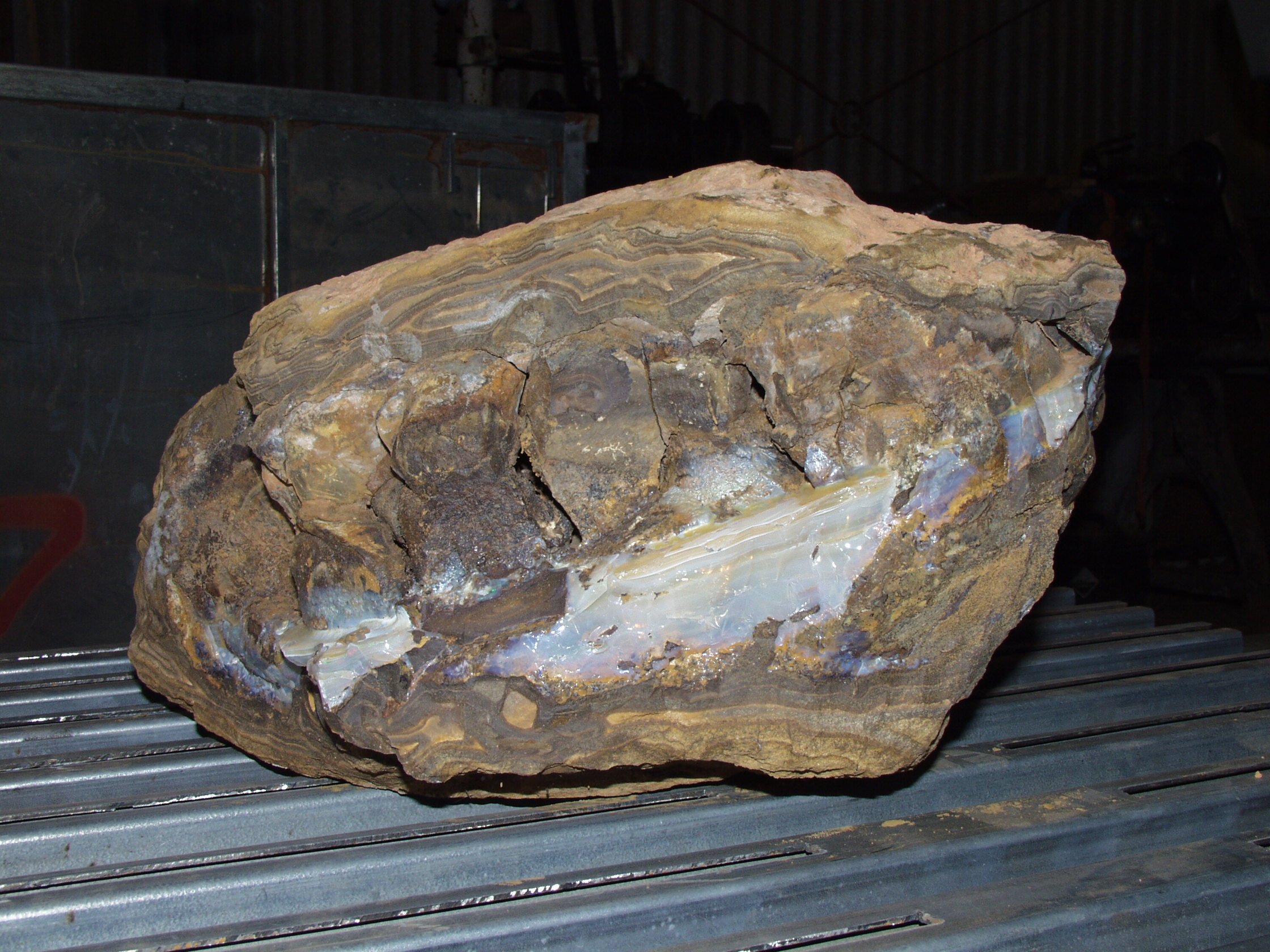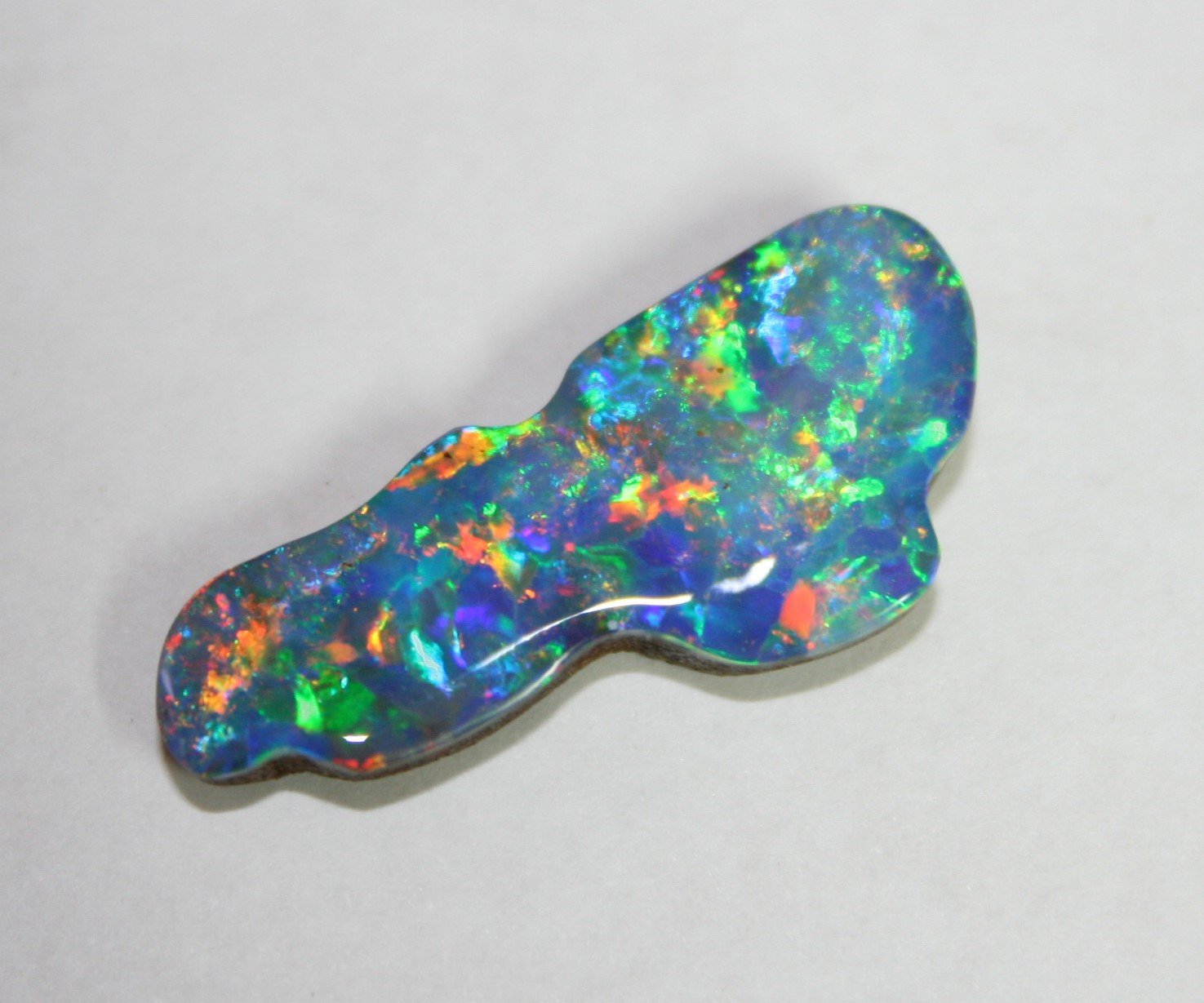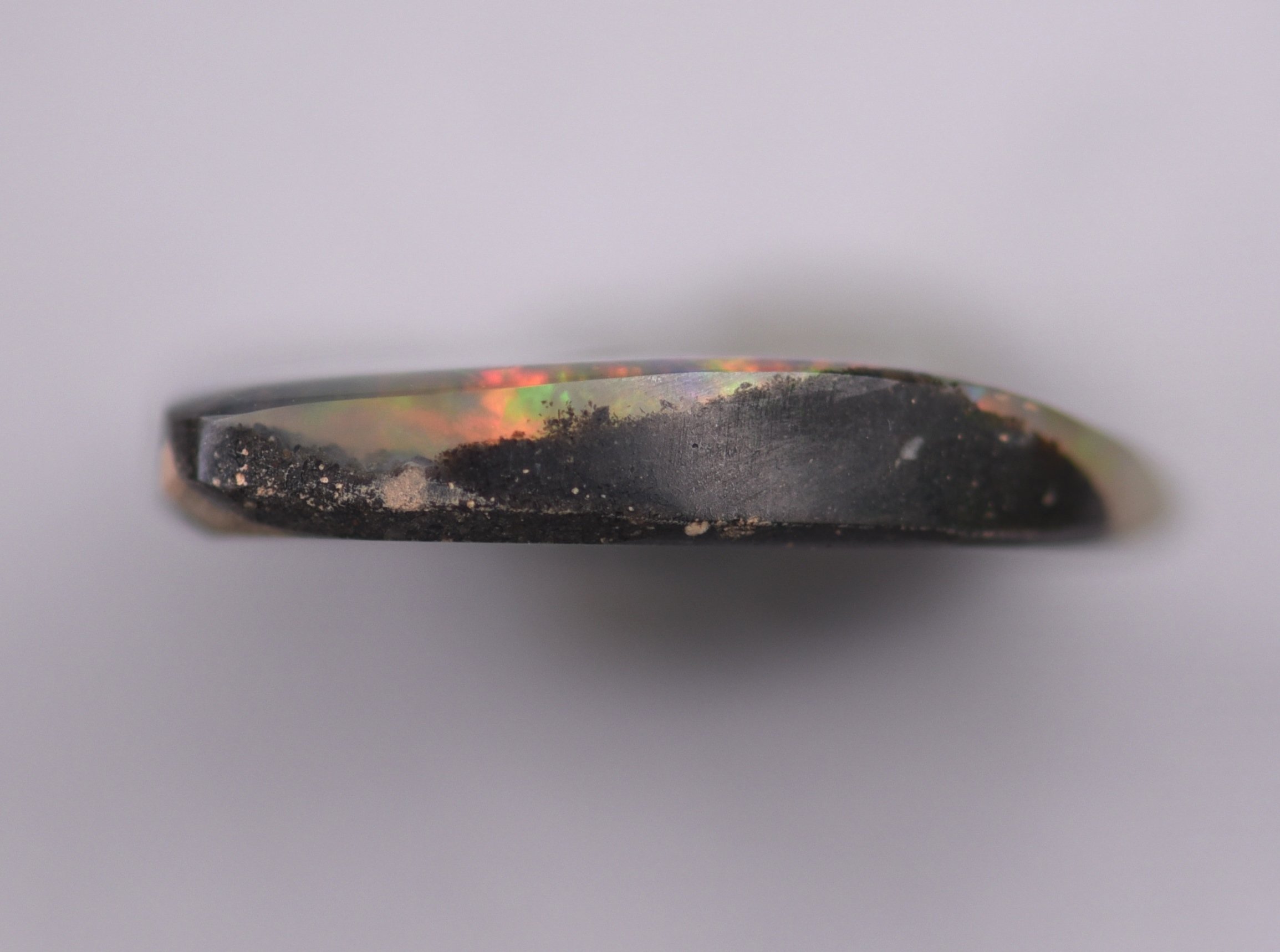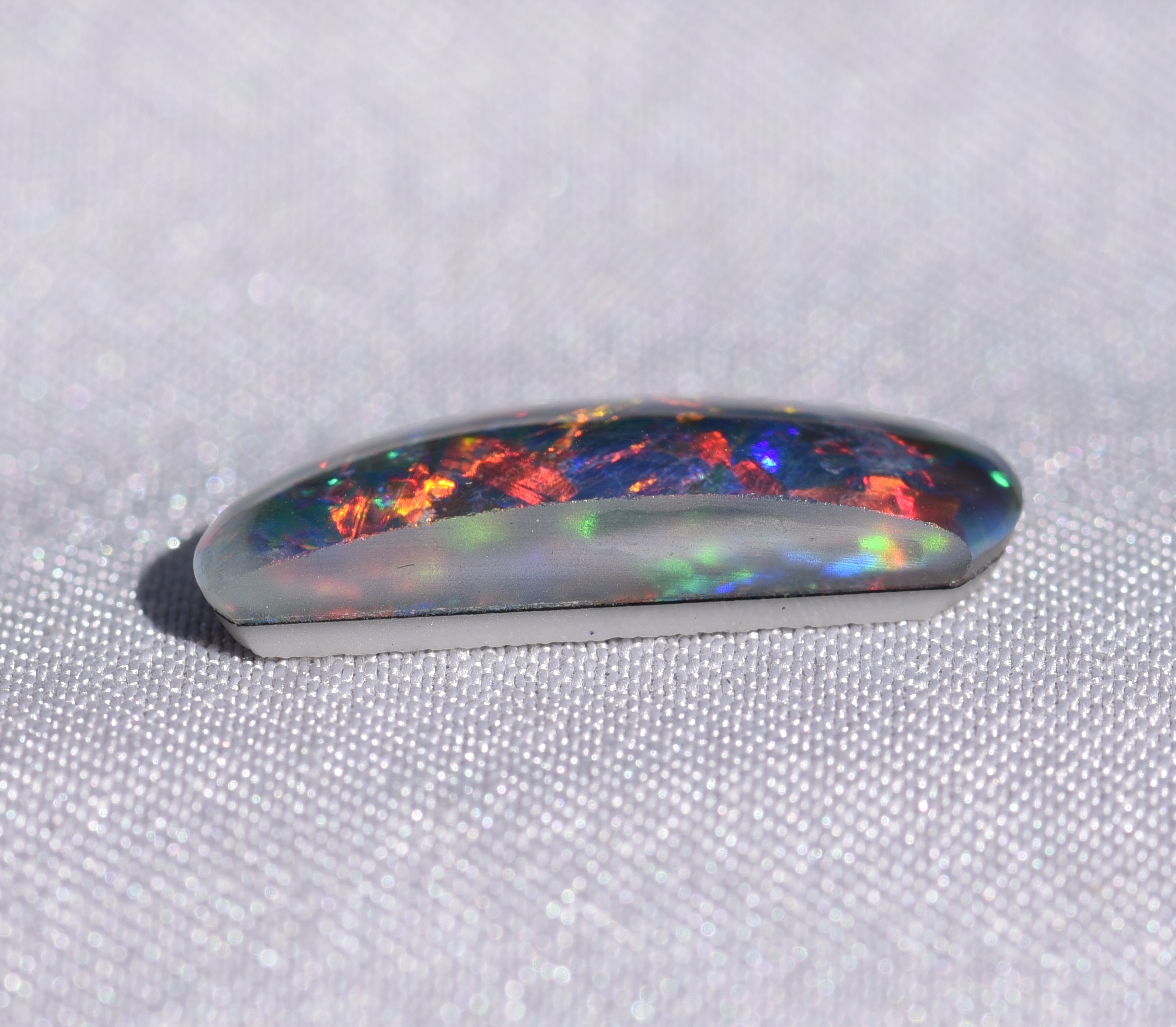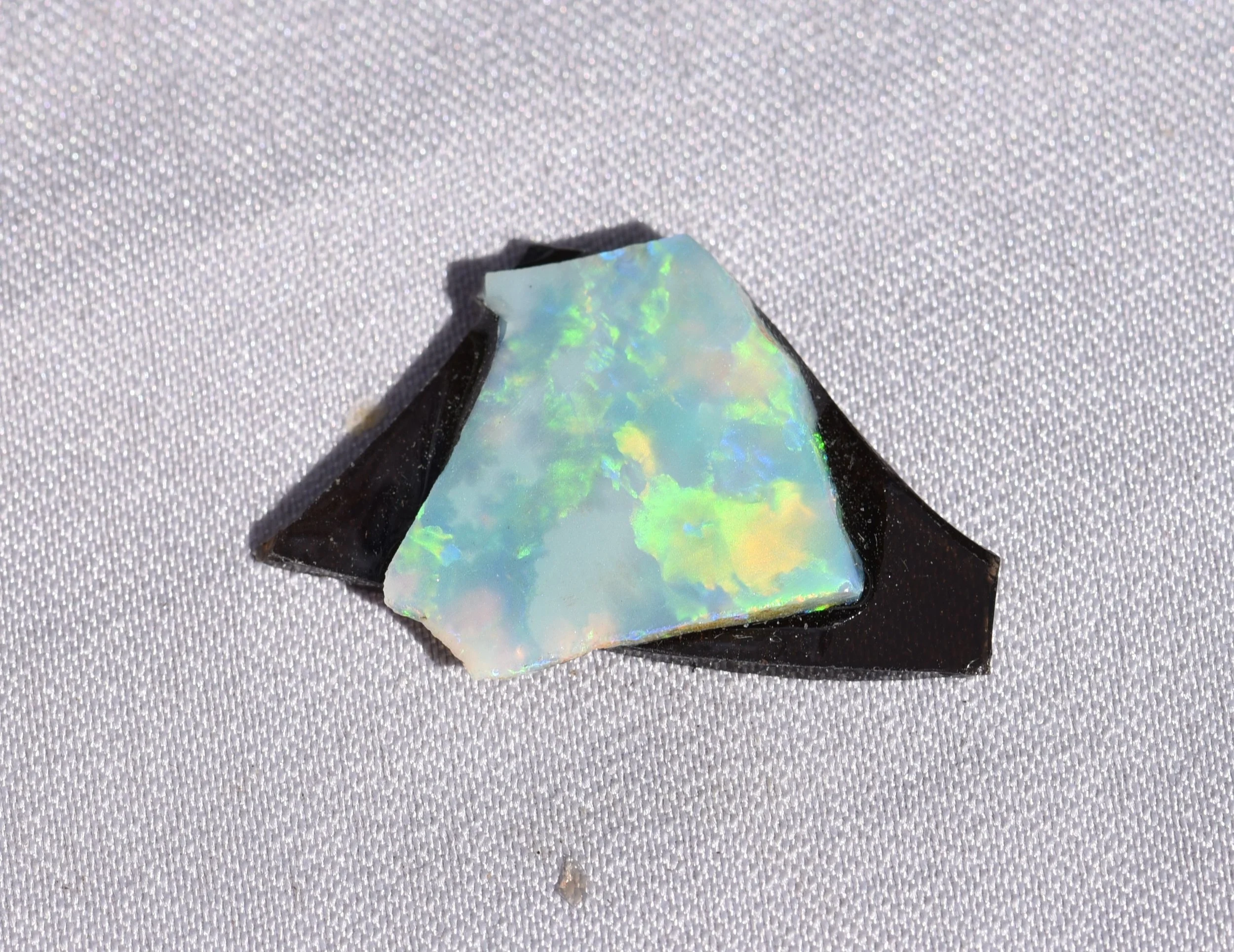What is Boulder Opal?
The term used in the jewellery industry for boulder opal originated in Australia. In many ways this type or variety of, precious opal, or opal showing the phenomena of Play-of-colour (often represented by the acronym POC) was perhaps the first precious opal discovered in Australia. Even before precious opal was discovered in Lightning Ridge, (NSW) or in Coober Pedy, (SA). Precious or noble opal was discovered in the state of Queensland. It is recoded in many early historical writings of Australian opal occurrences.
I would refer the reader to examine discussions in the diary of opal exploration by Tullie Cornwaith Wollaston, the gentleman who we in Australia may determine to be the father of the opal industry in Australia. The description of Wollaston’s original outback treks in search of precious opal are documented in his 1924 treatise which is known to us in the Australian Industry as “Opal Gem of the Never Never”.
Written as a diary, this book is an introduction to both the Australian adventurous spirit into the Australian outback explorer’s as well as an introduction to the beginning of what we now respect as the Australian opal industry.
The opal precious or noble originally sought out by Wollaston at Listowel Downs in the central Queensland outback, at this time these boulder opals were known either as “Sandstone opal” or “Ironstone” opal.
The reason for this is the association with the opal with the rock in which it forms. In some ways the term “boulder opal” is a colloquial term used by the Australian industry, however with the description of opal gemstones for use in the jewellery industry the published opal nomenclature (see below) the term “Boulder opal” has become and appropriate term for any precious opal attached to its host rock. This designation allows for the appropriate terminology and use in the jewellery industry for valuation, appraisal, and special report documents.
It is then appropriate to use these terms for opals from these occurrences where the gemstones are predominantly cut and polished with “the rock” incorporated in the gemstone. This may be considered as an “Opal and rock”. This then is the description given in the opal nomenclature which we continue to refer to in other blogs, and descriptions on the Academy website.
LITERATURE
A new era for opal nomenclature, Anthony Smallwood, Australian Gemmologist “Volume 19, Number 21, 1997.
Queensland boulder opal, Richard Wise, Gems and Gemmology, Volume 29, No.1, Spring 1993, pp4-15
A boulder of opal on a saw bench in Winton, Queensland Australia, courtesy of
A real boulder of opal! A closer view of the boulder opal seen to the left.
A photograph showing an ironstone boulder opal in the surrounding country rock.
A view of an opal boulder in the wall, or face of an opal mine. People give the scale. Not all Ironstone boulders or concretions are this large.
A portion of an Ironstone boulder showing the veins of precious opal.
A close up photo of a section or ironstone showing the nature of the veinlets of precious opal. This specimen will cut into some very nice gemstones.
As can be seen from the photographs above, boulder opal specimens can be large, the range of sizes can be from those pictured above to smaller “Yowah nuts”
A large ironstone concretion of precious boulder matrix.
There are almost an infinite number of designs, patterns or shapes and sizes of precious boulder matrix opal,
A “Yowah” nut sliced open showing a red, grading to brown ironstone and with a crystal opal centre.
A different “Yowah” nut showing precious boulder matrix opal around a central kernel of precious opal.
You can read more about Yowah nuts in the occurrences pages of the opal Academy (Curators note: this is yet to be included!). Also much precious opal from the boulder opal fields in Queensland can correctly be termed as “precious boulder matrix opal” and you can read about this on the “What is Matrix opal” post.
CUT AND POLISHED BOULDER OPAL
In some instances boulder opal is used as “specimen” material, often items of boulder opal are left as rough and uncut specimens and these are often used by the jewellery industry as features in shopfront displays to promote cut and polished opal pieces.
When “precious or noble boulder opal” is cut and polished for jewellery purposes the gemstone is cut with the opal component naturally attached to the host rock in which it was formed, (definition in the opal nomenclature). In such gemstone, the ironstone in Australian boulder opal can be included in the ‘face’ of the finished gemstone. The opal portion is often a thin veneer of opal on the ironstone base. So the ‘face’ may be described as “clean” with no ironstone though all amounts of “included” ironstone in the face, to a point not necessarily well defined where the gemstone i more correctly defined as “precious boulder matrix”.
There is much precious boulder opal that has a very high and vibrant Play-of-colour (POC) as can be seen in some of the opals displayed below. It is also correct to describe the Play-of-colour as “Black” boulder opal or “Light” boulder opal as illustrated.
the face of a vibrant full faced multicoloured precious black boulder opal
A side on photo of the gemstone on the left showing the how the opal is naturally combined with the ironstone
The back of the same gem, showing the ironstone.
A free form shape light boulder opal showing a small patterned POC, on a full faced gemstone, also notice the slightly undulating surface of this gemstone.
The back of the same gemstone shown to the left, notice how the yellowish brown back of the stone is a little granular sandstone nature, this may be referred to as sandstone opal, especially in older literature.
A vibrant multicoloured boulder opal, notice there are some small inclusions of ironstone in the face of this gemstone.
The back of the gemstone on the left showing the nature of a darker ironstone/sandstone.
Three free-form precious boulder opals showing a variety of moderately bright Play-of-colour (POC). The stones have a fairly flat and slightly undulating surface.
The back of the three gemstones show on the left showing a much tighter or finer grained slightly yellowish brown ironstone material with parts of the concentric or banded nature of the ironstone concretions in which they have formed
DISTINCTIVE Features OF PRECIOUS BOULER OPAL
One feature of boulder opal which is related to the opal having a thin veneer of precious opal on its natural rock material is that this allows the cutting of the gemstone to often have a free form shape with an undulating surface on the opal. This feature can be quite distinctive and produces gemstones often with a unique shape and design that allows specialised jewellery manufacturers to use their artistic ability for intimate jewellery designs.
Because of the nature of formation of precious boulder opal, these gemstones often allow a more “artistic” presentation for the gem cutter. The nature of these gemstones allow a cutter to have a ore nuanced design factor for the gemstones.
Free form shapes and the nature for the thin precious opal on the ironstone often provide for interesting shapes and a vibrant POC as shown in this full faced precious black boulder opal gem.
Another example of a free form shaped green on blue precious boulder opal. Note that the highlights seen when photographing this gemstone shows the undulating nature of this stone. The gem also shows a little more ironstone inclusions in the face.
Another free form green on blue precious boulder opal. The surface here is slightly more flowing, and the stone has been cut with perhaps 50% ironstone in the face.
A piece of boulder opal with a thin ‘seam’ of opal with POC as seen before splitting open.
The open pair of a boulder “split” opened up from the stone on the left.
“BOULDER” OPAL FROM ANDAMOOKA
If the more universal description or nomenclature for precious opal is considered and as has been adopted by the Australian opal industry (see previously mentioned article in the Australian Gemmologist), then any discussion regarding boulder opal needs to include the “quartzite boulder opal” from Andamooka in South Australia. This variety has a usually light or almost transparent opal in filling fractures in quartzite “boulders” found in Andamooka. They are referred to locally and in colloquial terms as “Painted Ladies”
A rough specimen of Andamooka boulder opal showing a light opal with green POC on the specimen
Another example of Andamooka boulder opal or “painted Lady. The base material is a flattened boulder of the Arcoona Quartzite
“BOULDER” OPAL FROM OVERSEAS OCCURENCES
This may be a slightly contentious part of discussion regarding boulder opal. As explained previously boulder opal is an Australian term used for these gemstones that are “opal and rock”. The nomenclature for opal previously mentioned was designed and published to be inclusive of all varieties of opal. So in this discussion to facilitate an internationally usable nomenclature, any occurrence or gemstone that is “opal and rock” should be included as “boulder opal” Some of my Queensland colleagues may disagree, however it would seem this is a reasonable way to proceed.
MEXICAN TYPE “RHYOLITE” BOULDER OPAL
Precious opal and “fire” opal (note that the term fire opal is related to the orange or dark red colour of the opal and not Play-of-colour POC).
A pair of oval cabochon cut Precious Mexican Rhyolite type boulder opal.
A pair of Mexican red “fire” opal in a very light and close grained rhyolite, Note that the red “fire” opal does not show any Play-of-Colour.
HONDURAN TYPE “BASALT” BOULDER OPAL
Again if we can consider our discussion of “Boulder opal” as opal and rock, then some gemstones of precious opal from Honduras can be considered as “boulder opal” as inclusion to an international opal nomenclature.
A sample of a “Black” or “Dark” precious Honduras basalt type “boulder opal.
The back of the gemstone on the left showing the black close grained basalt rock.
A side or elevation view of the gemstone to the left showing the opal combined to the basalt back.
questions, queries or any ideas?
Please make your comments known to the curator!


